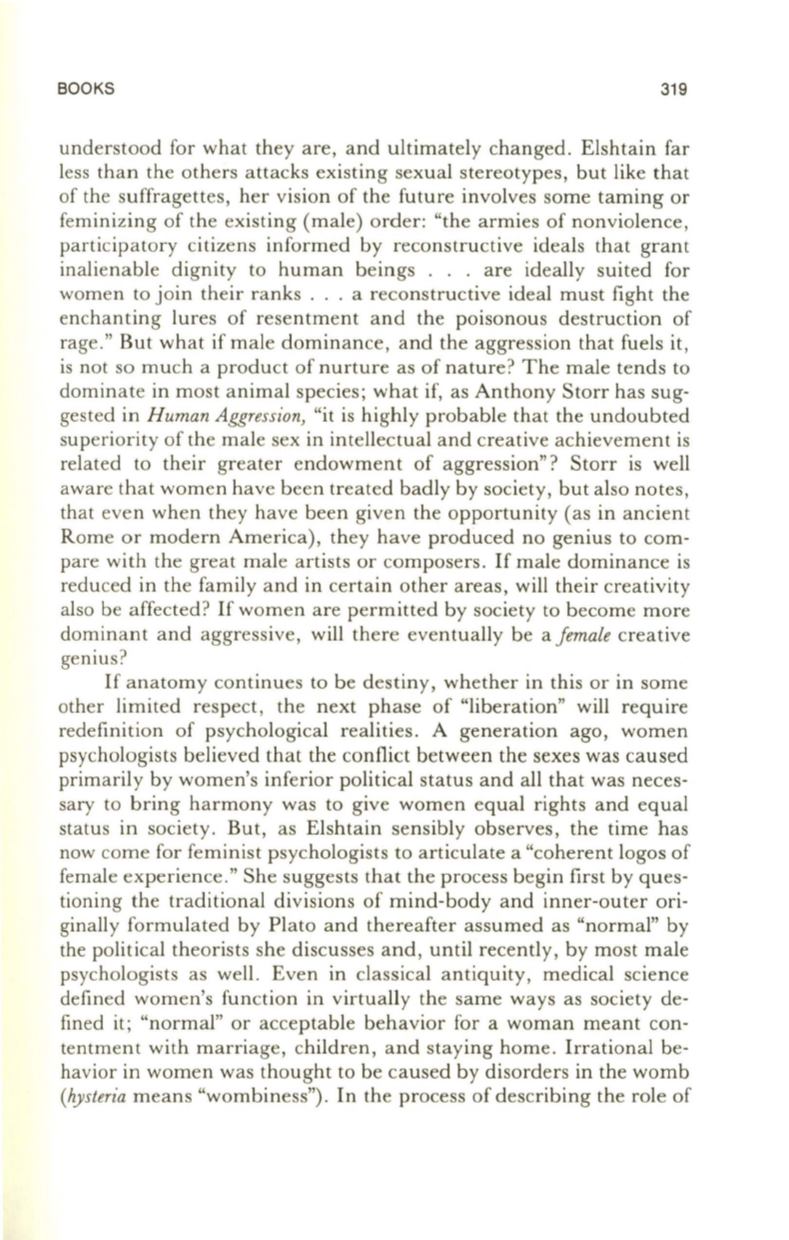
BOOKS
319
understood for what they are, and ultimately changed. Elshtain far
less than the others attacks existing sexual stereotypes, but like that
of the suffragettes, her vision of the future involves some taming or
feminizing of the existing (male) order: "the armies of nonviolence,
participatory citizens informed by reconstructive ideals that grant
inalienable dignity to human beings . . . are ideally suited for
women to join their ranks ... a reconstructive ideal must fight the
enchanting lures of resentment and the poisonous destruction of
rage." But what if male dominance, and the aggression that fuels it,
is not so much a product of nurture as of nature? The male tends to
dominate in most animal species; what if, as Anthony Storr has sug–
gested in
Human Aggression,
"it is highly probable that the undoubted
superiority of the male sex in intellectual and creative achievement is
related to their greater endowment of aggression"? Storr is well
aware that women have been treated badly by society, but also notes,
that even when they have been given the opportunity (as in ancient
Rome or modern America), they have produced no genius to com–
pare with the great male artists or composers.
If
male dominance is
reduced in the family and in certain other areas, will their creativity
also be affected?
If
women are permitted by society to become more
dominant and aggressive, will there eventually be a
female
creative
genius?
If
anatomy continues to be destiny, whether in this or in some
other limited respect , the next phase of "liberation" will require
redefinition of psychological realities. A generation ago, women
psychologists believed that the conflict between the sexes was caused
primarily by women's inferior political status and all that was neces–
sary to bring harmony was to give women equal rights and equal
status in society. But, as Elshtain sensibly observes, the time has
now come for feminist psychologists to articulate a "coherent logos of
female experience." She suggests that the process begin first by ques–
tioning the traditional divisions of mind-body and inner-outer ori–
ginally formulated by Plato and thereafter assumed as "normal" by
the political theorists she discusses and, until recently, by most male
psychologists as well. Even in classical antiquity, medical science
defined women's function in virtually the same ways as society de–
fined it ; "normal" or acceptable behavior for a woman meant con–
tentment with marriage, children, and staying home . Irrational be–
havior in women was thought to be caused by disorders in the womb
(hysteria
means "wombiness"). In the process of describing the role of


